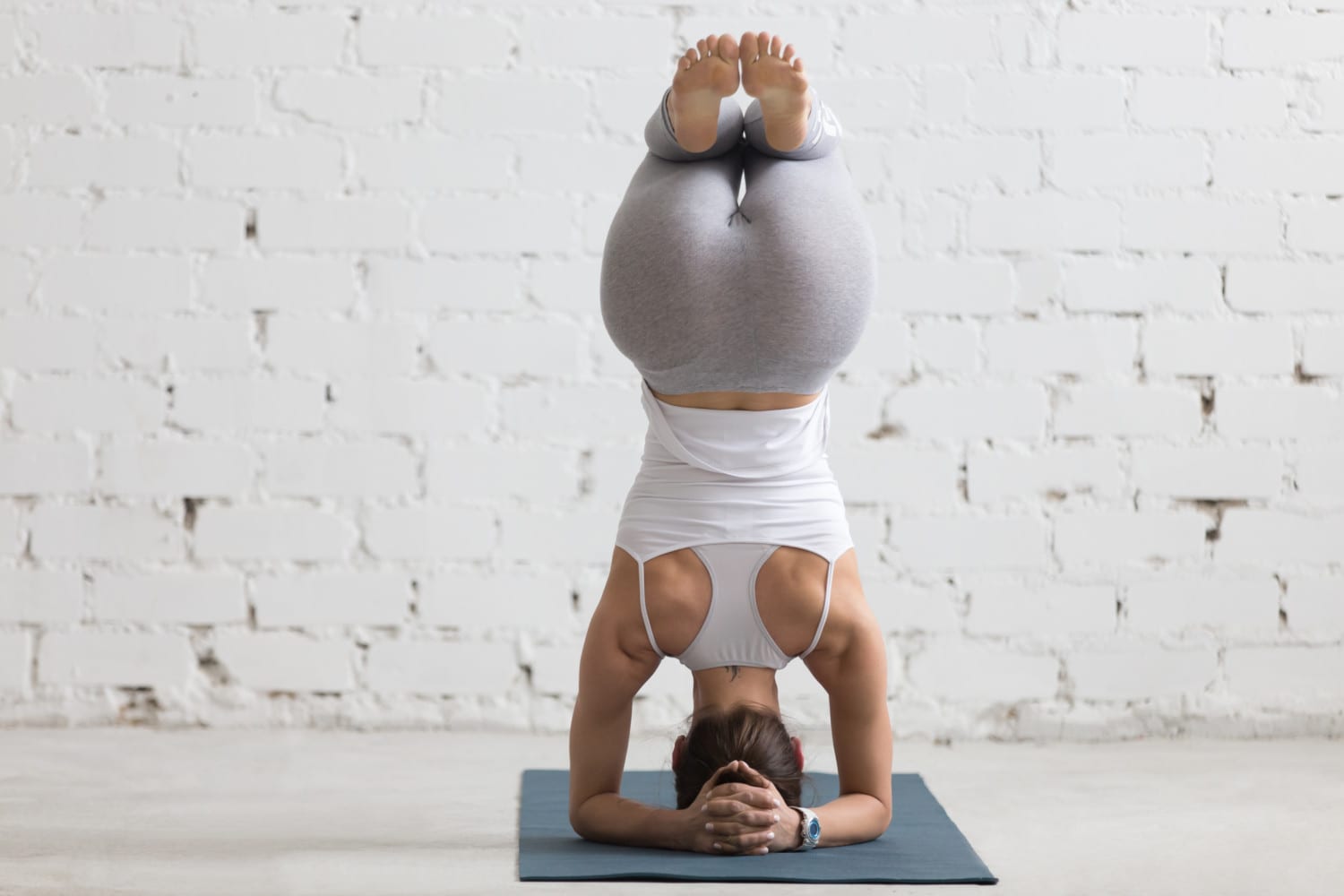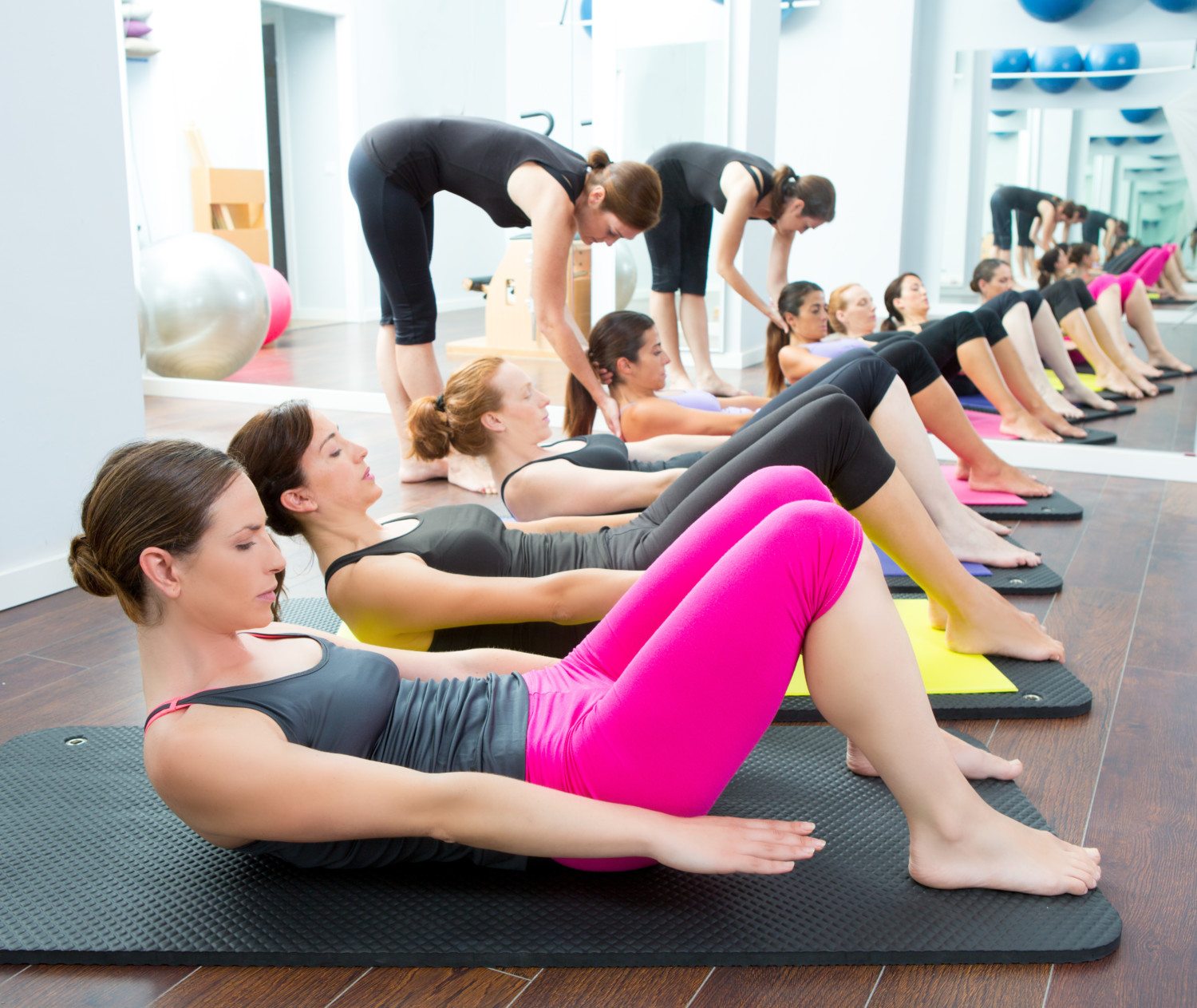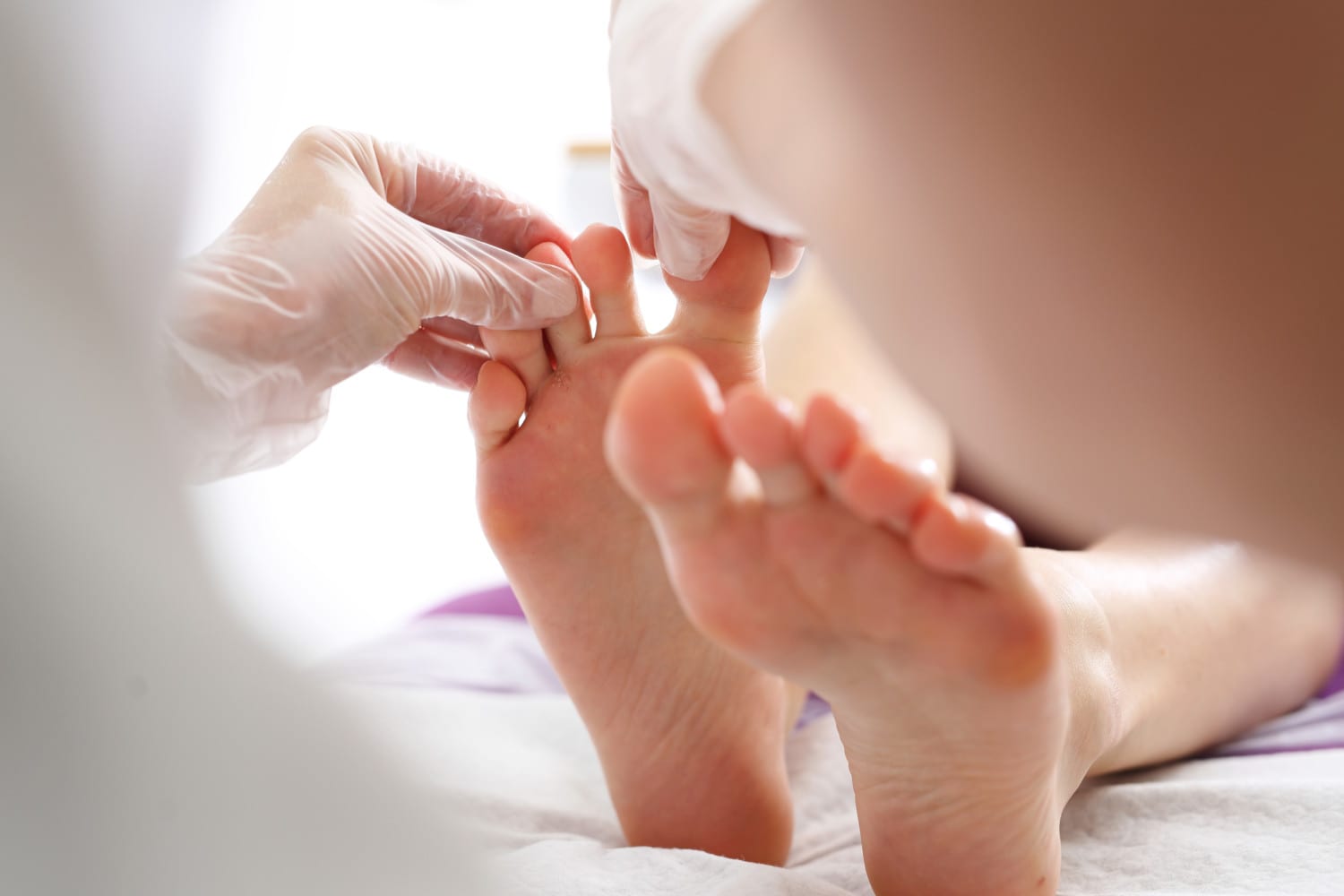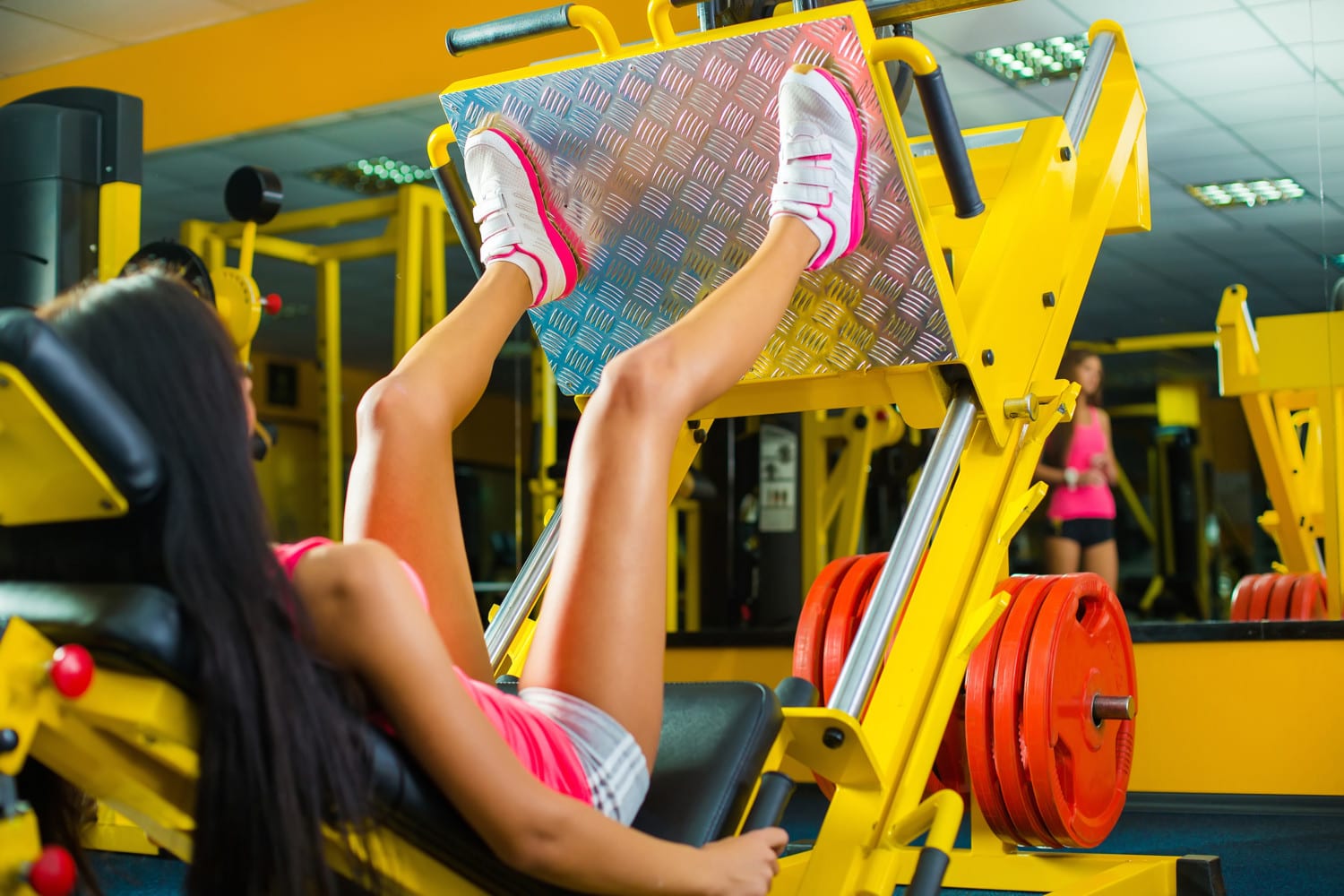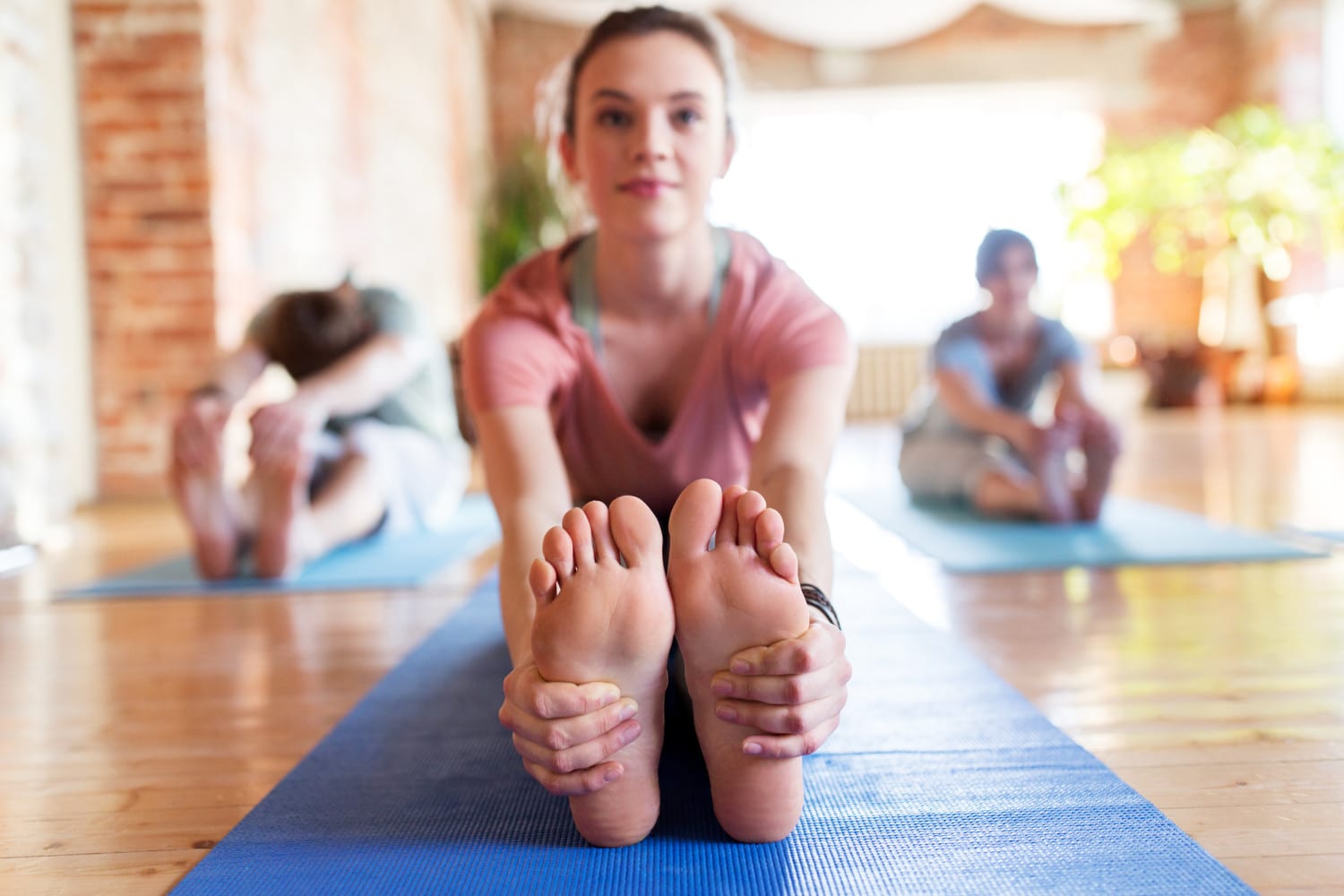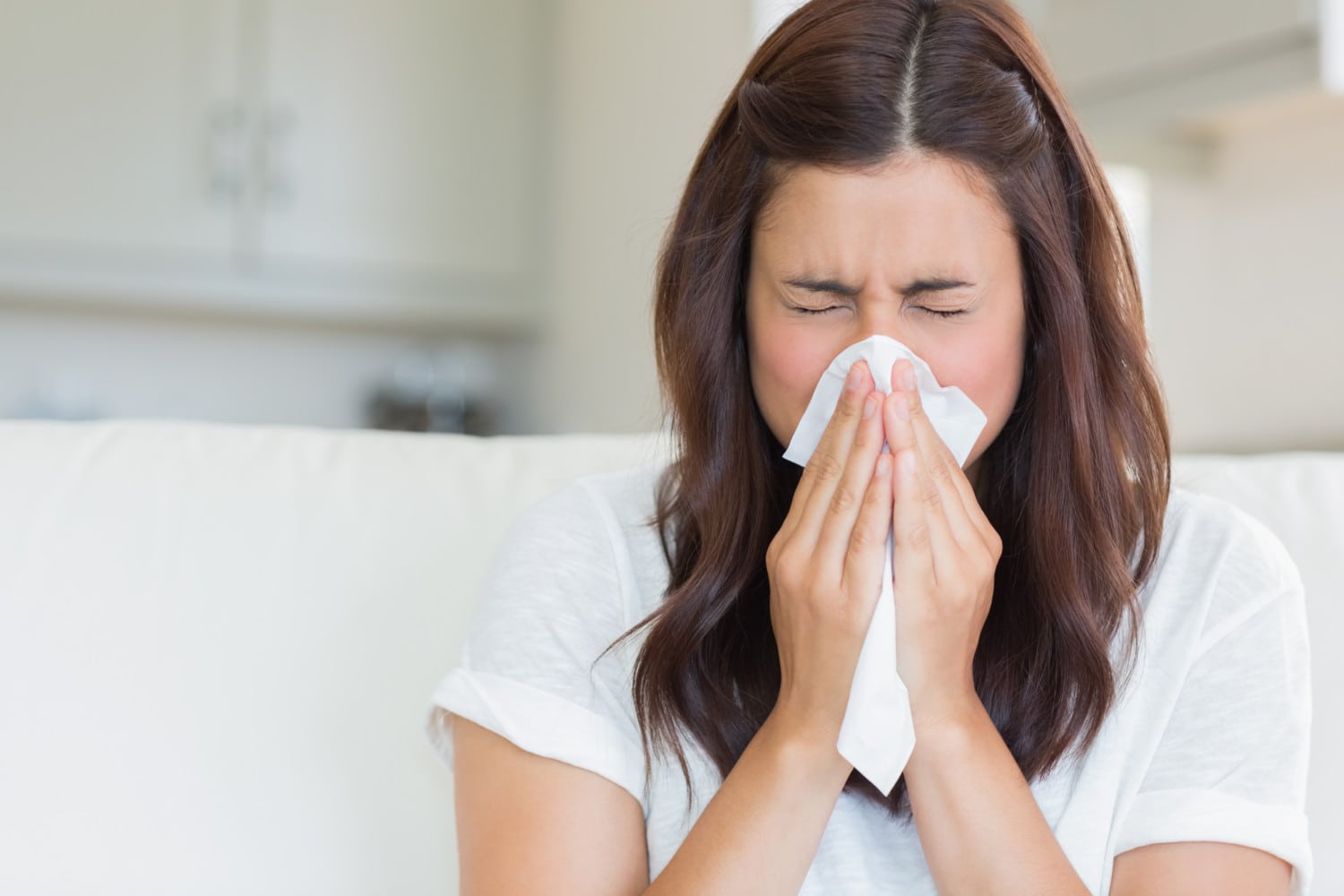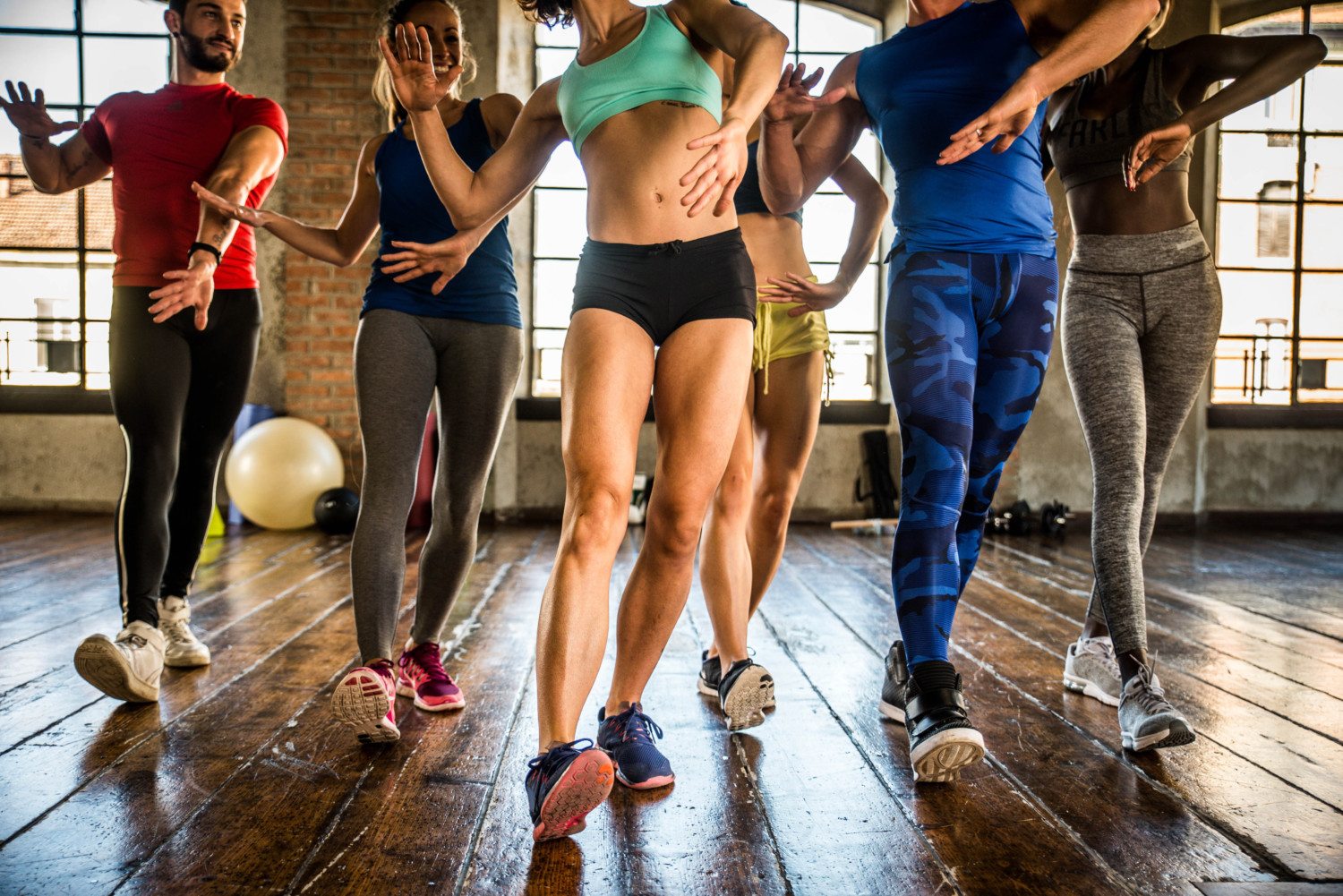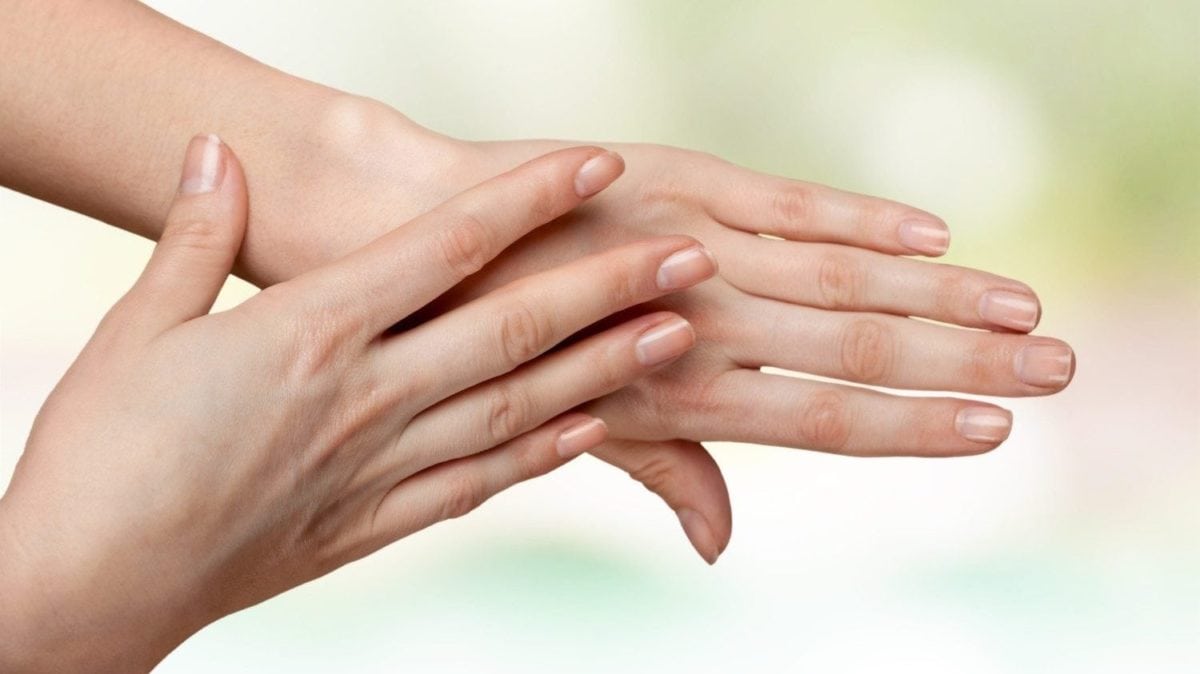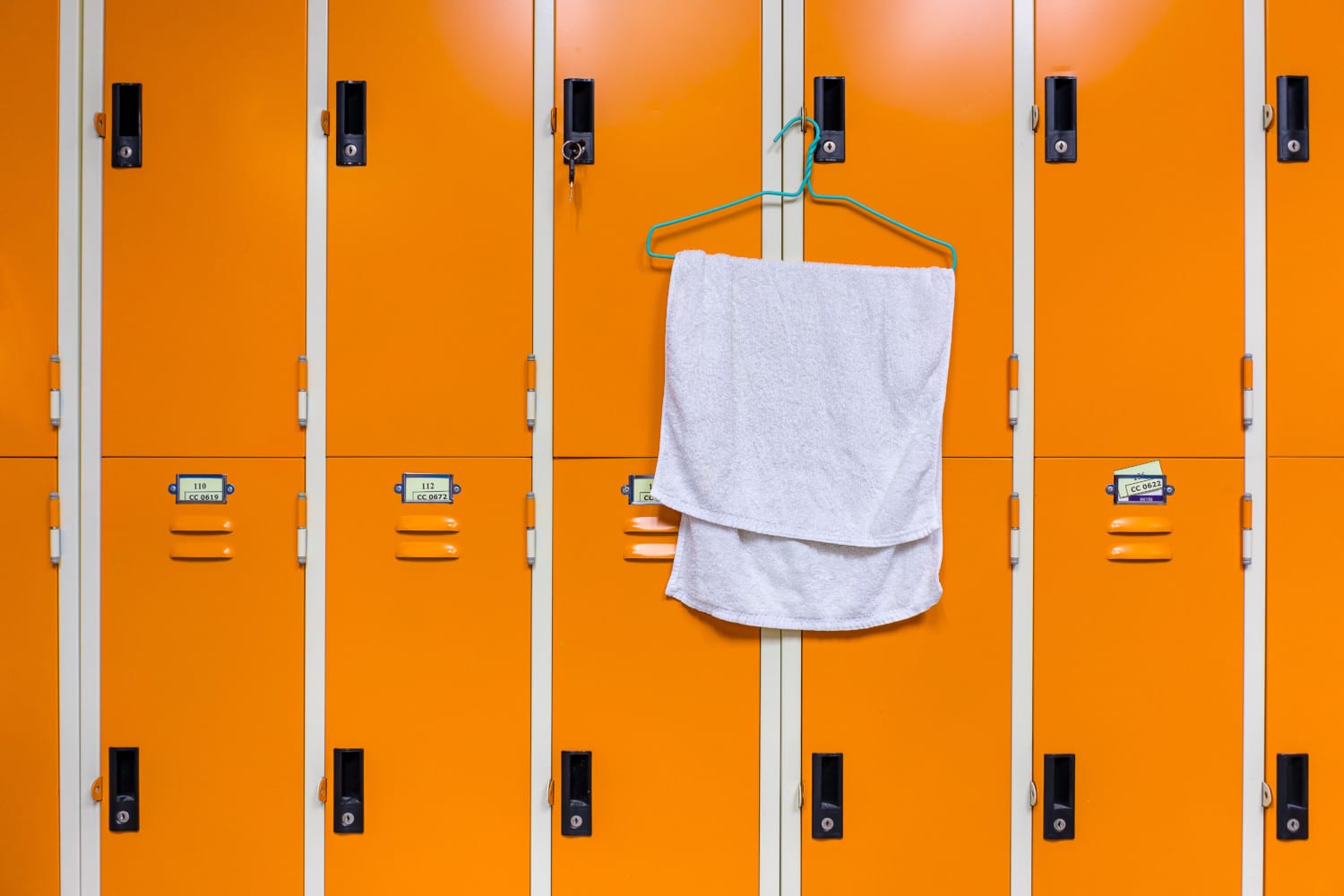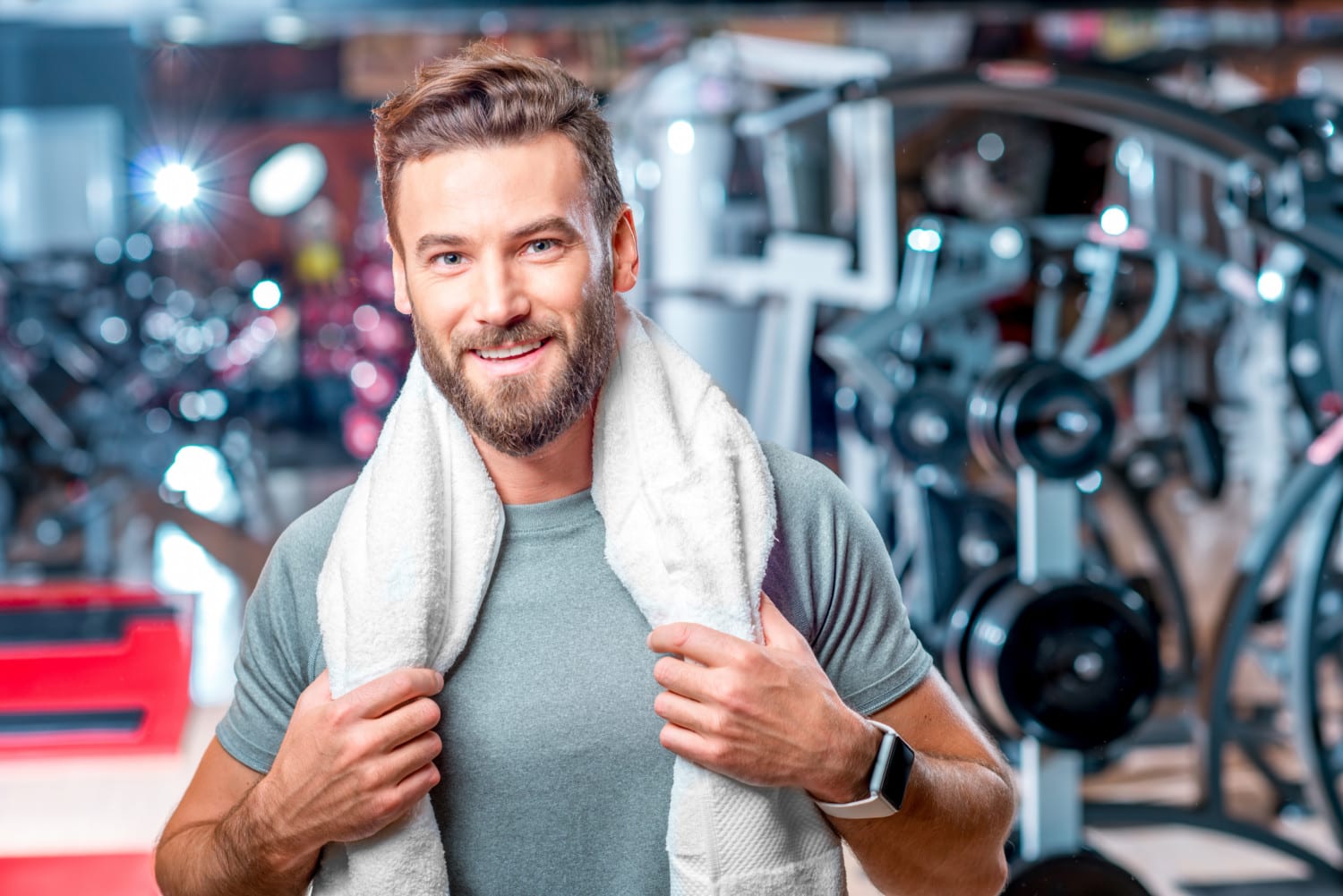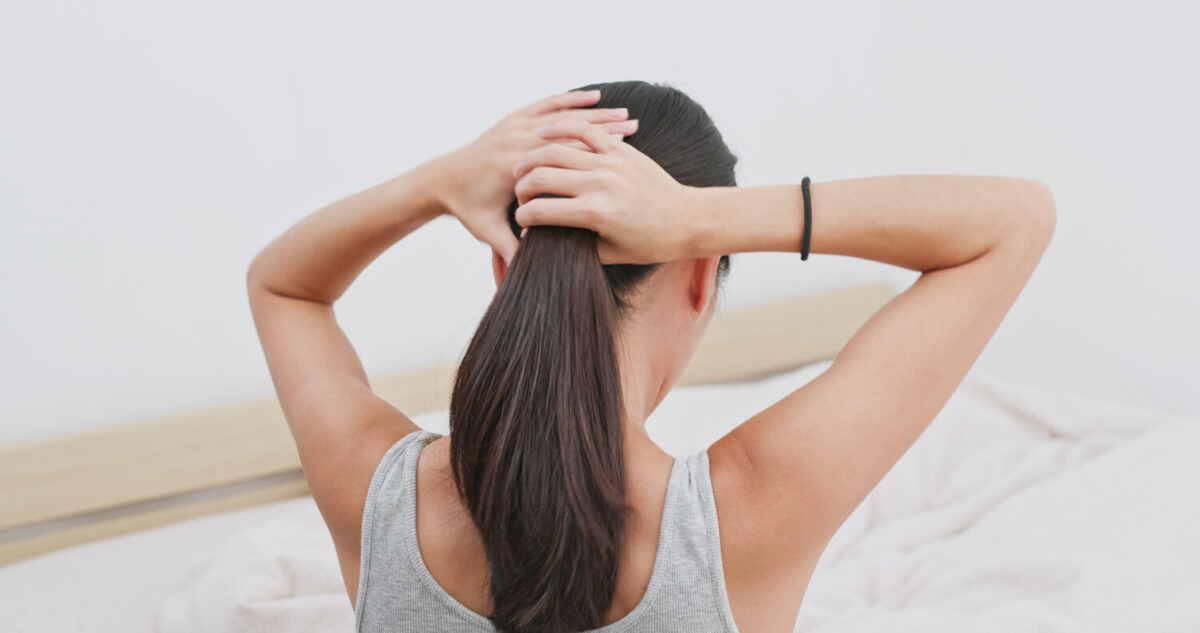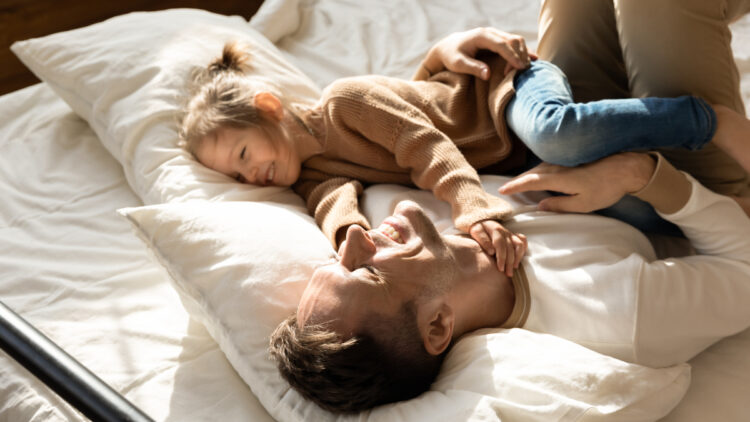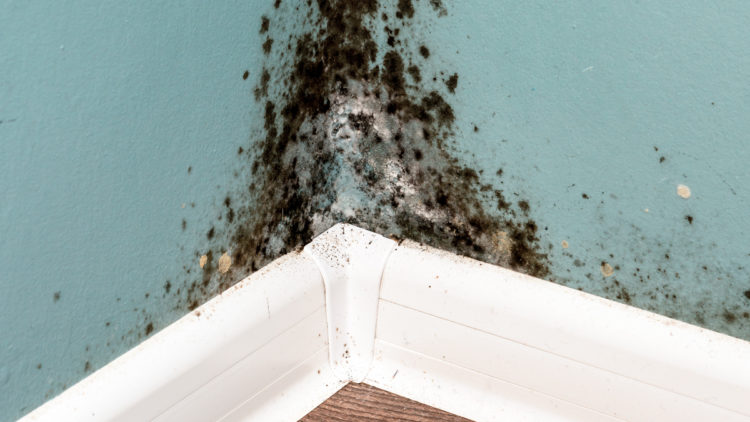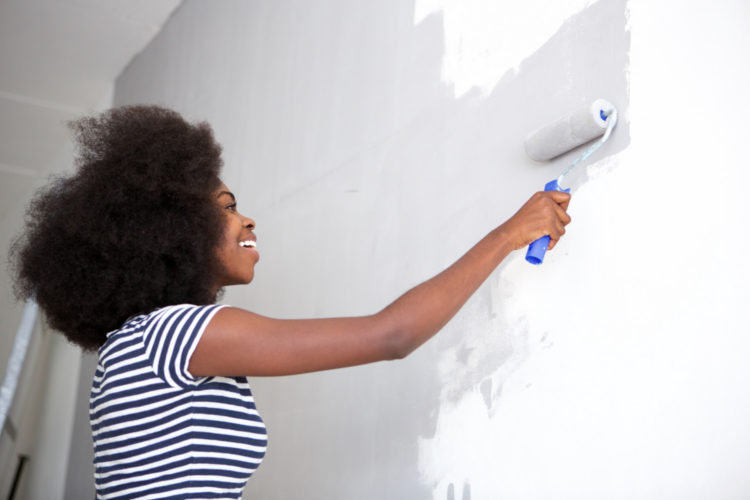10 Gross Things You Can Catch At The Gym—And How To Avoid Them

Planning to work out more in 2019? High-five to that!
But, with the annual resolution rush coming to a gym near you, we thought now would be a good time to put out a PSA of sorts. Gyms can be germy places, because, well, germs thrive in warmth and moisture (hello, saunas and locker rooms), and there’s a lot of sweat dripping on cardio handlebars, balance balls and yoga mats.
The whole point of going to the gym is to get healthier, not to get sick or bring home a yucky infection, right? That’s no reason to skip the gym, though, because with the help of antibacterial wipes, a pair of gym flip flops and some extra hygiene steps, you can avoid most of these icky problems.
Below are 10 gross things can potentially happen at the gym, according to experts and science, and how to avoid them.
1. Ringworm On Your Scalp
Yes, you really should BYOM (Bring Your Own Mat) to your next yoga class, especially if you’ve advanced to headstand poses. Tinea capitis, aka ringworm of the scalp, can cause hair loss, scalp scaling and swollen lymph nodes, explains board-certified dermatologist Dr. Susan Bard with Vive Dermatology in Brooklyn, New York. This type of ringworm is a fungus that can be picked up at the gym when you’re using shared mats while doing headstands, she says. You could also acquire it from sharing protective headgear at, say, a boxing gym, she explains. It’s treated with oral medication.
2. Ringworm Of The Body
Here’s your friendly reminder to wipe down equipment and mats at the gym! Ringworm of the body, or Tinea corporis, is a fungus that can be picked up from equipment or a mat that hasn’t been wiped down, Bard says. It presents itself as a round, pink, scaly plaque that’s most often itchy, she says, and it is typically treated with over-the-counter antifungal topicals.
3. Athlete’s Foot
Think twice before you go barefoot on gym mats, in the showers or on the pool decks. Athlete’s foot shows up in the form of itchy, red and scaly spots between your toes and on the bottoms and sides of your foot, Bard explains. Even if you do your best to keep your feet covered at the gym, you might not be in the clear. Athlete’s foot can happen if your feet get super sweaty while confined in tight-fitting shoes, explains the Mayo Clinic. Those damp, humid conditions help the fungus grow. To avoid this, opt for loose-fitting shoes that have ventilation and change your socks if your feet tend to get sweaty. The good news is that athlete’s foot can usually be cleared up with over-the-counter antifungal topicals, according to Bard.
4. Urinary Tract Infections
Urinary tract infections can be painful and come with a whole host of life-disrupting symptoms, like upper back and side pains, a frequent need to pee (and a burning sensation when you do), nausea and chills. Just as the symptoms are wide-ranging, so are the causes. Women are more likely to get UTIs (that’s because women have shorter urethras than men), and anything from not peeing after sex to certain types of birth control can cause UTIs. But what does this have to do with going to the gym? A 2014 study published in the International Journal of Environmental Research and Public Health found several pathogenic bacteria on various surfaces in fitness centers — including the UTI-causing bacteria Klebsiella pneumoniae, which was found on stair rails and toilet handles in the study. (Seriously, wash those hands in hot water!) To fight this one (and yeast infections, too), change out of your sweaty workout pants as soon as you’re done at the gym.
5. Plantar Warts
You can pick up plantar warts the same way you pick up athlete’s foot, which is by walking barefoot in the shower, explains Dr. Alison Mitzner, a board-certified pediatrician. “Plantar warts are caused by a virus and can enter your system from tiny cuts on your feet,” she explains. “Be sure to wear flip flops if you’re walking around the bathroom or shower at the gym.” You could potentially contract the warts by going barefoot in a yoga or martial arts studio, too, so socks are your friends! If you do notice plantar warts (oftentimes they’re tough and callus-like with black dots in them), you can try to treat it with over-the-counter products that contain salicylic acid, according to Consumer Reports. If the wart persists or you have pain, it’s time to see a doctor, who may freeze it off, cut it out or eliminate it with a laser.
6. Flus And Colds
“In general, the best way to avoid anything gross at the gym is to do what you would do to prevent any infection, including the flu and colds,” Mitzner says. Wash your hands to help prevent the spread of infection and avoid touching your eyes, nose or mouth, because any germs on your hands can go directly onto those mucous membranes and quickly get absorbed into the bloodstream, she explains. “Also, be sure to wipe down your equipment with disinfectant,” Mitzner says. (We’re really putting an emphasis on that one!) Another tip? Make sure to change out your gym towel, too. “If you use the same towel all week to wipe your face, you’re basically just spreading bacteria,” Mitzner says.
7. Folliculitis
These are acne-type lesions that appear on the back, shoulders and buttocks, explains board-certified dermatologist Dr. Tsippora Shainhouse, who is in private practice in Los Angeles. It can be caused by inflammation and irritation of the hair follicles, which is where the acne lesions start, she says. “It can be exacerbated by sitting around in sweaty gym clothes and rubbing up on pieces of gym equipment that are covered with bacteria and yeast,” she says. To avoid this skin problem, change out of your sweaty gym clothes when you’re finished working out, she suggests. It’s also a good idea to shower or wipe down with salicylic acid-based wipes, or use antibacterial and anti-yeast washes in the shower, Shainhouse explains.
8. Nail Fungus
You’re probably more likely to get this from a pedicure (bring your own equipment!) than the gym. But, you could potentially pick up Tinea unguium, or nail fungus, from walking around barefoot at the gym or on the mats, explains Bard. Topical medications only have about a 30 percent success rate in treating nail fungus, and you’ll likely need to be prescribed an oral medication, she says. Better to just avoid going barefoot at the gym.
9. Jock Itch
Jock itch is caused by the same fungus that gives you athlete’s foot. It’s commonly passed from the feet while putting on underwear, Bard says. It can also travel via hands or towels. Jock itch can affect your genital area, buttocks and inner thighs, according to the Mayo Clinic. Jock itch is more common in men, and it’s treated with antifungal creams and powders. If it doesn’t clear up within a few weeks of using over-the-counter medications, see a doctor.
10. Staph Infections
Along with athlete’s foot, Staphylococcus aureus is the most common microbe you’ll likely come across at the gym, according to the Cleveland Clinic. Many people carry this bacteria on their skin, and almost one out of three carry it in their noses. In most instances, it’s harmless. But it can cause skin infections and get serious if it makes its way into the bloodstream via a cut in the skin, according to the Cleveland Clinic. A Staph infection may show up as a red, painful, swollen boil or abscess on the skin, the clinic explains. Doctors treat it with antibiotics or by draining it. The Cleveland Clinic recommends wearing flip-flops in the gym bathroom, putting towels on the bench where you sit and covering any open wounds. Also, use the antibacterial sprays to wipe down equipment.
So, are you ready to add “gym flip flops” and “anti-bacterial wipes” to your shopping list?


